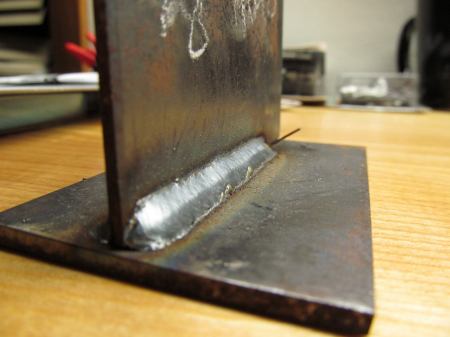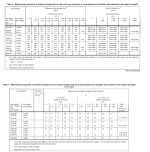Fillet Weld Capacity

Description
This is to calculate the fillet weld capcity using BS 5950 and EuroCode 3.
Fillet weld capacity calculations are essential for designing safe and efficient welded connections in steel structures. Both Eurocode 3 (EN 1993) and BS 5950 provide guidelines for calculating fillet weld capacities. Here's a summary of the key aspects involved in these calculations:
-
Load determination: Calculate the forces acting on the welded connection, such as shear, tension, or combined forces, using the appropriate load factors and load combinations as specified by the design codes.
-
Weld geometry: Determine the weld size (throat thickness, a) and length (l), as well as the angle between the weld and the applied forces. For equal leg fillet welds, the throat thickness is typically calculated as:
a = 0.7 * leg size (s)
-
Material properties: Obtain the material properties, such as the yield strength (f_y) and the ultimate tensile strength (f_u) of the base metal and filler material.
-
Fillet weld capacity calculations:
a. Eurocode 3 (EN 1993): According to Eurocode 3, the design resistance of a fillet weld (F_Rd) is calculated as:
F_Rd = a * l * f_wd / γ_M2
Where: a = throat thickness, l = weld length, f_wd = design weld strength (minimum of the base metal and filler material strength), γ_M2 = partial safety factor for welds.
b. BS 5950: In BS 5950, the design capacity of a fillet weld (P) is determined as:
P = 0.6 * a * l * f_w
Where: a = throat thickness, l = weld length, f_w = weld strength (minimum of the base metal and filler material strength).
-
Compare weld capacity with applied loads: Compare the calculated fillet weld capacity with the applied loads to ensure the weld can safely support the forces without failure. If the weld capacity is insufficient, consider increasing the weld size or length, or modifying the connection geometry.
-
Additional checks: Perform additional checks for factors such as weld quality, residual stresses, fatigue, and distortion, as specified by the design codes.
-
Final design and documentation: Document the fillet weld design in detailed drawings and specifications, providing a guide for the construction team and for obtaining necessary permits and approvals.
Always consult the specific requirements and procedures outlined in Eurocode 3 (EN 1993) and BS 5950, as well as any relevant national annexes, to ensure accurate and safe fillet weld capacity calculations.
Calculation Preview
Full download access to any calculation is available to users with a paid or awarded subscription (XLC Pro).
Subscriptions are free to contributors to the site, alternatively they can be purchased.
Click here for information on subscriptions.



